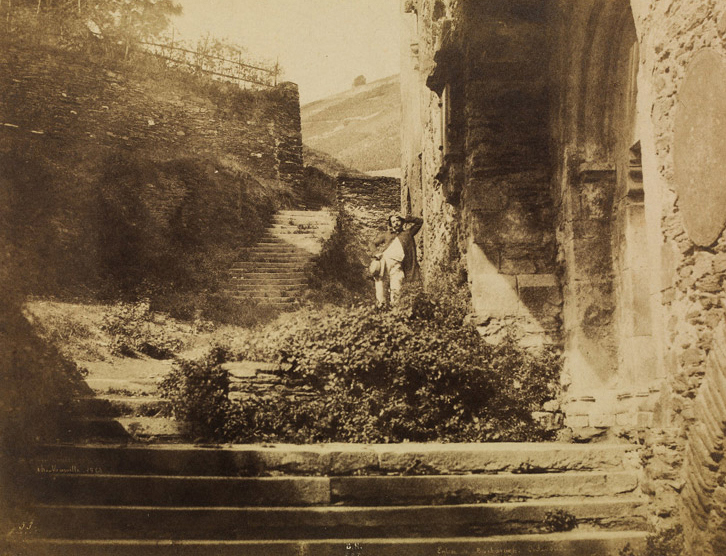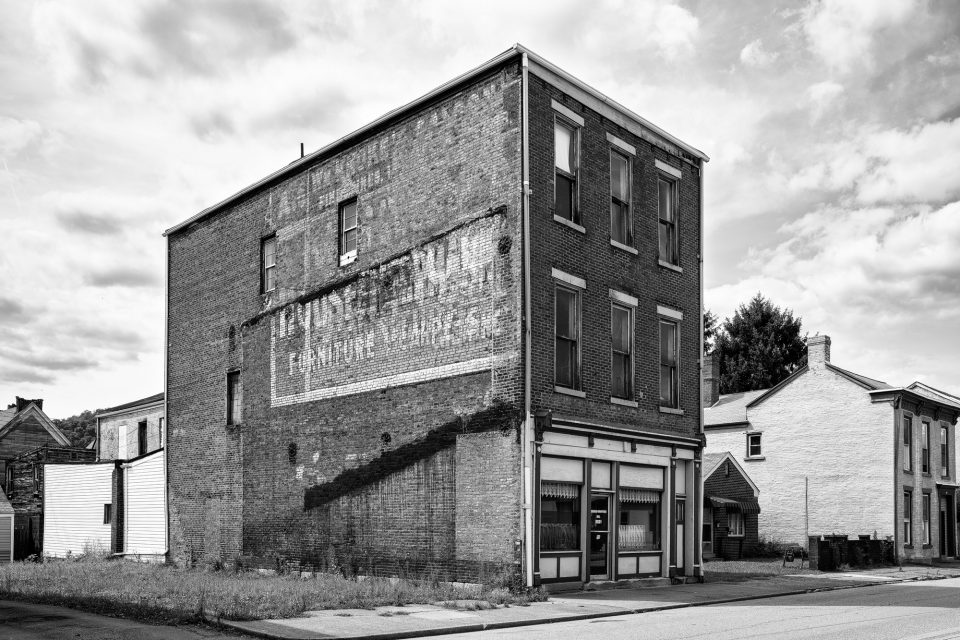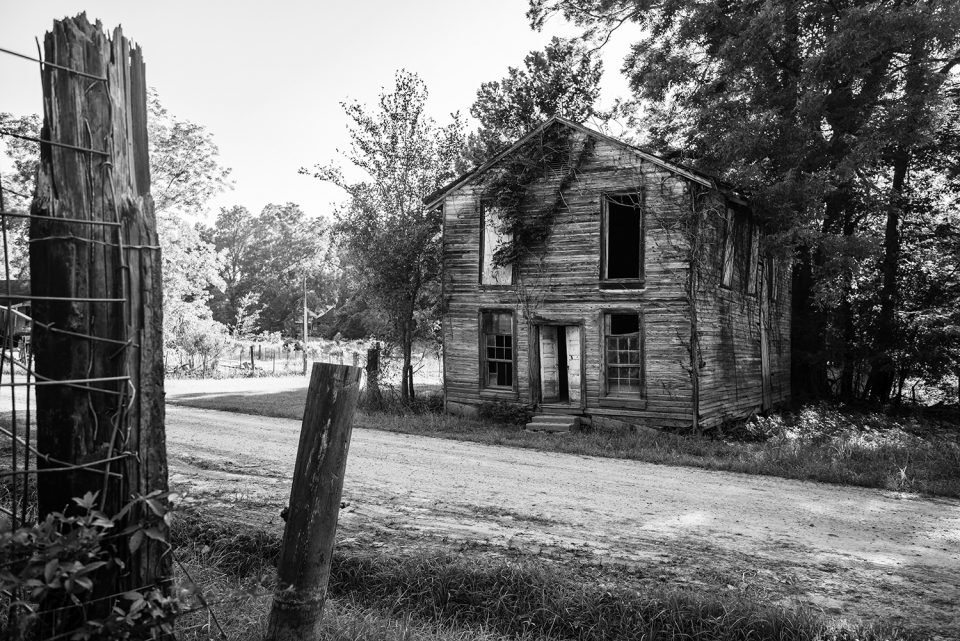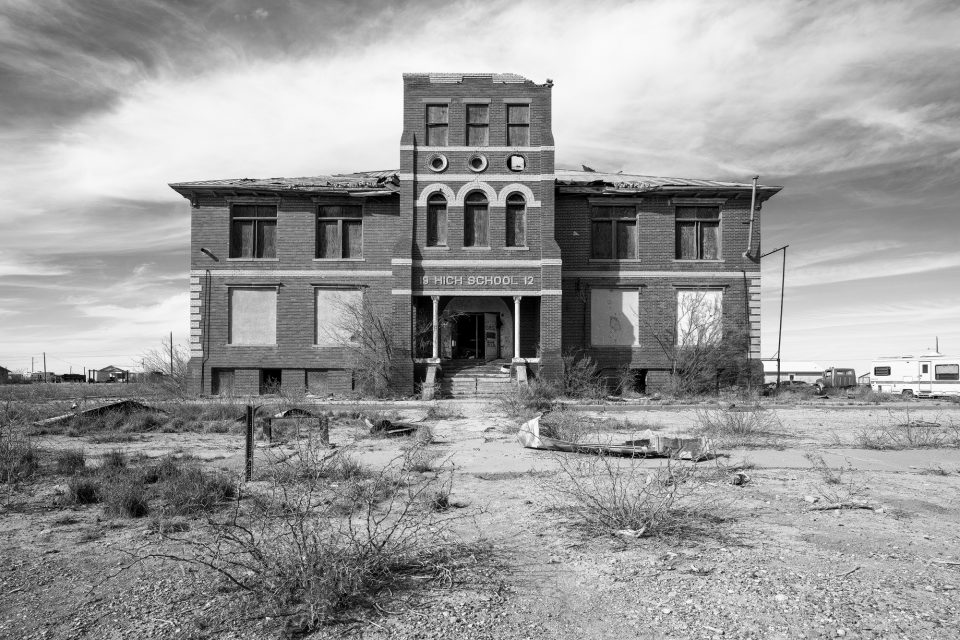In episode 60 of the Fine Art Photography podcast: Why I love shooting abandoned buildings, and some of my favorite locations to find them
In this episode of the Fine Art Photography podcast, I talk about some of my favorite go-to locations to find abandoned buildings and how I research the histories of abandoned houses and storefronts.
Full transcript:
The Fine Art Photography Podcast, episode 60
In this episode of the fine art photography podcast, why I love shooting abandoned places
There’s a famous quote from the late Susan Sontag that goes “All photographs are memento mori. To take a photograph is to participate in another person’s (or thing’s) mortality, vulnerability, mutability. Precisely by slicing out this moment and freezing it, all photographs testify to time’s relentless melt.”
The phrase “memento mori” is from Latin and it means essentially, remember you too shall die. It was a Roman way of reminding people not to get too big for their breeches, but the term also refers to an artistic trope that includes skulls and bones and other reminders of the fleeting nature of existence.

The French photographer Charles Marville made incredible photographs of a changing Paris. Beginning in 1850, he produced calotypes of medieval buildings for France’s Commission for Historical Monuments. Twelve years later, Marville was commissioned by the city of Paris to become its official photographer, and he worked to systematically document Parisian buildings and streets that were slated for destruction as part of the city’s urban renewal project.
By the way, Marville was a pseudonym — his actual last name means hunchback in French. That’s a bummer for sure.
Anyways, officials had the idea to modernize Paris by way of a wholesale razing of its ancient quarters — probably seemed like a good idea at the time but seems criminal to me now. Officials wanted to use Marville’s images to show a before-and-after effect — as if to say “see how old and dirty it was before we transformed it into this modern city?” In Marville’s photographs, the streets often look lonely and deserted but the people of Paris were dissolved from the images by the very long exposure times required of photography in those days.
Marville’s work was documentary, but also beautiful. His photographs are works of art.
The U.S. Department of the Interior’s Register of Historic Places maintains documentation of historic buildings that often include photographs of the structures. Not to be critical, but these are not Marville-quality photographs but are rather purely documentary. They are typically clear, representational, and uninspired.
I’ve always considered my own architectural photography to be a form of preservation. I love the style, design, and texture of old fading and abandoned buildings. There’s a romance to thinking about all the lives and life stories that have passed across the portals of old buildings.
But even as I photograph them, I often wonder how much longer they will last. I know for a fact that several of the antique architectural gems I have photographed have since been demolished.
A few years ago, I stopped to make photographs in a small town in Mississippi. It was an unplanned stop — I was on the way to someplace else. As often happens, a local business owner — actually he was a minister with a church in one of the downtown storefronts — came outside to see what I was up to. It was curiosity more than suspicion.
He talked to me about the town and he kept expressing curiosity and even dismay at why I was making images of the run-down parts of the town — peeling paint on old bricks and stuff like that. He kept saying, I wish you wouldn’t take pictures of that old stuff. He said it hurts him because he remembers the town when it was thriving. My only reply was that I find these things to be beautiful and this is my way of preserving them. THAT he was able to understand. Satisfied, he went on his way.
Prior to the pandemic, the nation was undergoing a remarkable time of economic growth. A flourishing economy creates a desire for new construction, which often means destruction to make room for newer buildings. In Nashville, it’s been an ongoing concern with historic preservationists for a while. A lot of historic buildings have been razed, or renovated beyond recognition.
Time marches on. This podcast isn’t an indictment of that. It’s just a nod to the value of capturing and holding the fading beauty of these old structures.
At some point, my fascination with abandoned places morphed into a quest to learn more about the history of the structures and the people who lived or worked there. It wasn’t good enough to photograph the old house or storefront, I wanted context. When was it built? Who owned it? If it was a business, what did they do there?
In many cases, this is exceedingly difficult if not impossible information to get. But in other cases, it’s possible to hit pay-dirt — the mother lode, so to speak.
Some places I go to learn about historic buildings are real estate records, historic documents like books and newspapers in the Library of Congress, antique fire maps also often found in the Library of Congress, and of course applications to the National Register of Historic Places. Often, there’s information on facebook or Pinterest, but those sources can be tough to verify.
One case where I found an abundance of data not just about one building, but about many buildings — in fact an entire district, was from my recent visit to Wheeling, West Virginia.

I visited Wheeling last summer – 2021 — and upon exiting the state highway and driving beneath an overpass it was like I entered a dream world of historic architecture. This place looked like the city that time forgot. In just a few hours, I made dozens of images of buildings both abandoned and still in use. Wheeling is one of those places that’s a nirvana for me and the type of photographs I make. There are a few others that I’ll mention later in the podcast as well.
Later when I was back home, processing the images and pouring through the video I made, I began searching for information about some of these antique and abandoned buildings that I stumbled upon several really helpful online resources — most importantly was an application to the National Register of Historic Places for an entire district in South Wheeling, exactly the spot I photographed. I am seriously indebted to the work of the researchers who wrote and submitted that application and I credit them fully in my document.
There was so much history and other information that I adapted it into an ebook called The Wheeling Portfolio, which is now for sale on my website at keith dotson dot com slash books. It’s 49 pages with photographs, history, detailed citations, metadata, maps, and some statements about my purpose for making the work. It’s $4.99 for the digital download in case you’re interested and thank you in advance for the support.
The building from Wheeling that interested me the most was the old Schmulbach Brewery. I became enthralled with the Schmulbach buildings because they had these amazing carved faces on their exterior. The brewery was so successful, it comprised maybe a dozen or so structures in the vicinity, most of which are still standing, even though the brewery closed in 1914. Some of those are now abandoned while others still house businesses today.
One of the things you can read about in the book is the story of the Schmulbach Brewery, and especially its charismatic namesake Henry Schmulbach. Born in Germany, he came to the US at 8 years of age, with his parents. He went from working as a penniless cabin boy on a riverboat to becoming a multi-millionaire.
Not only did he buy the Nail City Brewery and rename it after himself, he also built the state’s first big office building — you could call it West Virginia’s first skyscraper. And he owned a lot of other businesses as well. His personal logo was a capital S with two vertical lines — that’s right — a dollar sign. It can still be seen on the gates of his city house in South Wheeling. But he was also a civic leader and a benefactor for the city. This larger than life character still casts a long shadow in Wheeling, even more than 100 years after his death.
But there were other sides to Henry as well. Why were there five men named Henry Schmulbach recognized in his last will and testament? How did he come to be tried for murder? In the e-Book I get into all of that.
Rodney Ghost Town in Mississippi was once on the short list of potential state capitals. It was a prosperous, booming, and rowdy river town. There’s not much left now — a few occupied houses, several wooden structures that are suitably angular and cattywampus, and two incredible churches, both of which were somewhat renovated — I think in the 1990s, but are again falling fallow. I remember standing on the narrow path before the old Baptist Church, surrounded by tall grass, with a dog barking somewhere in the distance — eerie.

The town was occupied during the Civil War and there’s a story about how locals invited some of the occupying Union troops to church, when a group of Confederates arrived to take them captive and shots were fired. There’s a funny anecdote that one of the soldiers hid beneath the voluminous petticoats of one of the local women. The rest of the Union sailors on a gunboat in the nearby river heard the shots and opened fire on the town, destroying one or two of the buildings and striking the brick face of the church. A cannonball stayed lodged there for years, and there’s still one in the divot today, but it’s not the original ball.
The town began to suffer after numerous floods and an eventual change of course in the Mississippi River away from the town. Despite its downfall, the town was still populated in the 1940s when visited by photographer Marion Post Wolcott, working on behalf of the Farm Security Administration. Most of the buildings she would have seen are now long gone. Rodney is worth a visit but it’s frankly not easy to find, and a long way from anywhere.
If you get there under the right conditions, you can get phenomenal shots — I’ve seen more than one photographer’s images of the iconic old Baptist Church in flood waters, even in floods late at night. The images are unreal — spooky even. The potential gator and snake ratio would make me think twice about that but I admire those who’ve done the work.
Honestly almost any city or town in the Mississippi Delta affords opportunities to shoot abandoned places — including Helena which is across the river in Arkansas. I found an amazing abandoned motel there with a great old sign in front.
Pamplin City Virginia is not a ghost town but it does have a long strip of vacant and / or abandoned storefronts in the old part of town. Some of these buildings are partially renovated or at least somewhat well preserved. Some are being used to store junk. Some are truly derelict. I have some history of these buildings but it’s a bit convoluted. I researched it online and published some history, only to hear from locals telling me that I had it all wrong, and then other locals contacted me to tell me I was wrong and so were the others who originally corrected me.

Toyah, Texas — There’s absolutely no reason to go to Toyah Texas unless you find yourself traveling along Highway 20 in far west Texas. I was on my way to shoot the desert landscapes near Marfa when I spied what appeared to be a tall old building as I was rolling by. I took the next exit, and found a small goldmine of abandoned buildings, ruins, and even a really great old west graveyard. Toyah is practically a ghost town, but not quite. It looks like a place where people go who don’t want to be bothered. The tall building I saw from the Interstate was indeed an abandoned place — the old high school built in 1912 — incredibly three stories tall — which seems way too large for this little town, even if the town has shrunk since 1912. There are also several terrifically decrepit old houses sitting empty.
Like my next location, Toyah Texas has some nasty and brutal events in its history, even by Texas standards.
Cairo Illinois — this is a mecca for those interested in making images of abandoned buildings. But it’s a sad story and frankly, one of the few places where I don’t want to delve too much into the history. There’s been some really bad things happen in Cairo — people mistreating other people — I’ll just leave it at that. To be honest, even when photographing the old abandoned houses that are rapidly leaning into collapse and consumption by trees and vines as neighborhoods go back to nature, I wonder if the people who lived in there might have been some of the malignant ones who perpetrated some of those bad events in Cairo’s past.
In Cairo, you can find an abandoned movie theatre and various commercial storefronts. You can find abandoned houses from various eras of history — in fact, the first time I went there, across the street from the glorious Riverlore mansion was a big white house with second floor porch railings falling onto the lawn, and all the doors and windows standing wide open. The epitome of a haunted house, beautiful but spooky — eerily quiet.
But abandoned buildings in Cairo are disappearing rapidly. As you might imagine, the city doesn’t want vacant buildings sitting around as magnets for all the hazards and problems that come with abandoned buildings.
And that brings me back to my original point. I try to shoot them before they’re gone, while they’re still beautiful but on the edge of oblivion. The textures of old wood and bricks — the architectural details entertwined with ivy and plants growing from cracks in the masonry are always thrilling to me. The mystery of the people who passed over the floorboards is endlessly intriguing.
You can see my photographs of abandoned places on my website at keith dotson dot com, and remember you can also download my books there as well.
That’s all I’ve got for this episode. Thanks for listening — I’ll talk to you again real soon.
